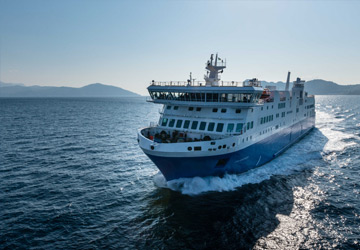
-
Recent Searches
Recent Searches
- Travel Alerts
- My Account
- Customer Service
-
United Kingdom
Agios Kirikos to Kalymnos Ferry
The Agios Kirikos Kalymnos ferry route connects Ikaria with Dodecanese Islands. Currently there is just the 1 ferry company operating this ferry service, Dodekanisos Seaways. The crossing operates up to 2 times each week with sailing durations from around 2 hours 40 minutes.
Agios Kirikos Kalymnos sailing durations and frequency may vary from season to season so we’d advise doing a live check to get the most up to date information.
Agios Kirikos Guide
Agios Kirykos is a town located on the Greek island of Ikaria which lies in the North Aegean Sea. Located in the village of Kambos is the Archaeological Museum, which is situated on a hill which was once the ancient fortress of Oinoe. The museum has many artefacts for visitors to see including Neolithic tools, pottery, clay statuettes, coins, carved headstones and columns. Next to the museum is Agia Irini, the island's oldest church.
The island, which derives its name from Icarus, the son of Daedalus in Greek mythology, is connected by ferry to the Greek ports of Piraeus and Rafina. ferry connections are also available to the Cycladic islands of Syros, Tinos, Mykonos and Andros and also to the islands of Rhodes and Ikaria. Journey times vary between around 5 and 10 hours depending on ferry type and route.
Kalymnos Guide
The Greek island of Kalymnos lies in the south east Aegean Sea and is located between the islands of Kos and Leros, and is one of the Dodecanese group of islands. The island is quite small with a land area of just over 100 sq. km but despite this it is the fourth largest of all the Dodecanese islands. The island's name has changed over its history. It was first named Kalynda, then Kalymna and then finally, Kalymnos. The island's capital is Pothis, although the most of the island's residents live in Chora, and is the island's second largest town.
Kalymnos is known for its sponge divers and sponge fisheries and it's inland terrain is steep and rocky and is popular with climbers. There are over 1,300 different climbing routes on the island that range in difficulty and terrain. Some routes are on slabs, some on big walls or on overhangs. The landscape used to be a curse for the island's residents but as it attracts visitors to the island it is now a blessing, certainly in terms of tourism.
There is a frequent ferry service to Piraeus, Rhodes and to the other Dodecanese islands. There are also ferry routes operating to the Cyclades islands, Samos and, during the summer season, to Chios, Mytilini, and Thessaloniki.


